Name Baladeva Vidyabhushana | Died 1768 | |
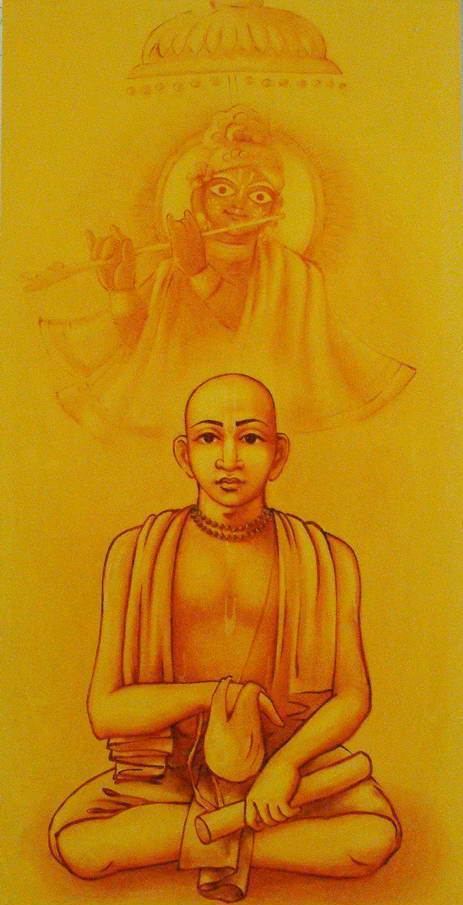 | ||
Baladeva Vidyabhushana (c. 1700-1793) was a prominent Gaudiya Vaishnava acharya (religious teacher). He never mentioned his birthplace or anything about his family background. Historians have estimated that he was born sometime in the 18th century, in Odisha (possibly near Remuna, Balasore ). Some wrongly believe that he disappeared in 1768. His Aisvarya-kadambini mentions the year 1779 (year 1701 of Shaka era), and his disappearance in 1793 was documented in the court of the King of Jaipur.
Contents
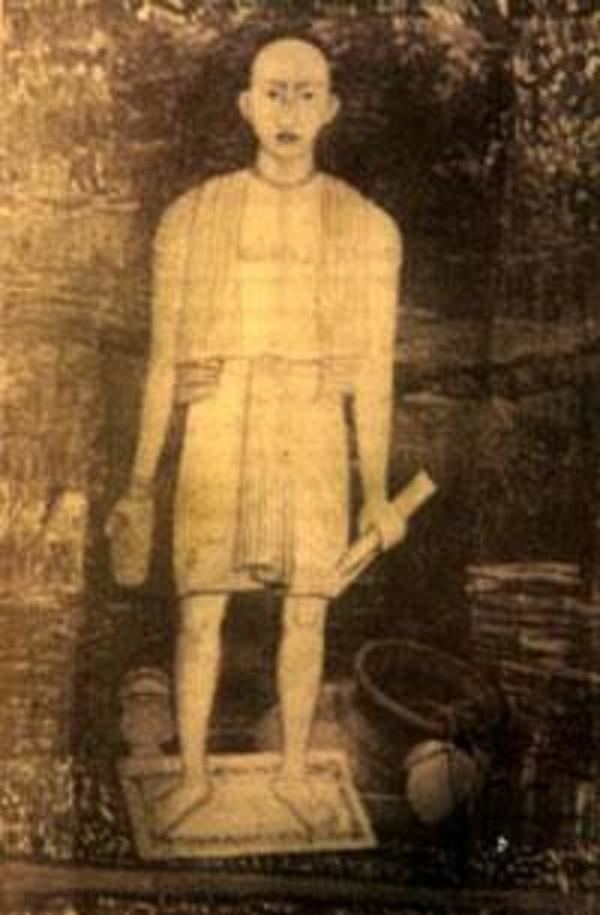
At a very early age, he finished his studies of grammar, poetry, rhetoric and logic and then went on pilgrimage. During this time he spent some time with the Tattvavadis in South India and thus became conversant with the Vaishnava Theology of Sri Madhva. He became a powerful exponent of this system throughout India.
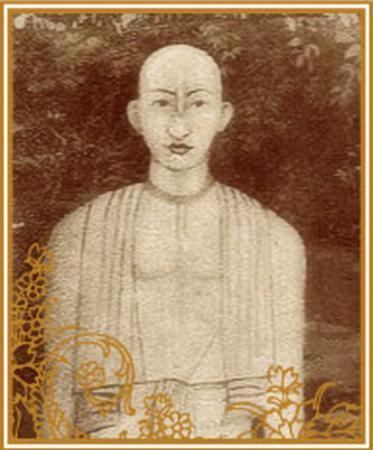
During his travels he again came to Utkaladesa (Odisha) and met with a grand-disciple of Sri Rasikananda Deva, Sri Radha-Damodara Deva by name, with whom he discussed philosophy. Sri Radha-Damodara Deva explained the conclusions of Gaudiya Vaishnava Theology as expounded by Sri Caitanya Mahaprabhu. These talks penetrated his heart and awakened divine love within. Thus, after a few days he was initiated with the Radha-Krsna mantra and began to study the Sat-sandarbhas of Sri Jiva Gosvami.
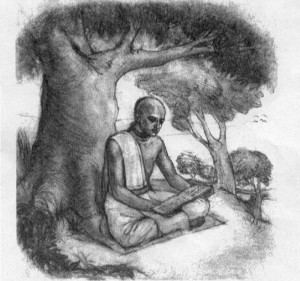
In a very short time he became very expert in Gaudiya Vaisnava philosophy. With the permission and blessings of his guru, he moved to Sri Vrindavana (Vrindavan) to further study these teachings under Sri Visvanatha Chakravarti Thakura. Baladeva fully accepted the Gaudiya Vaisnava philosophy and began to preach it with great vigor.
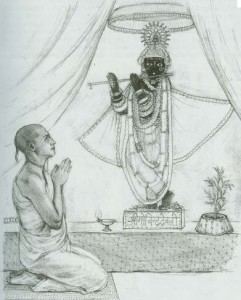
Govinda Bhashya: Gaudiya Vaishnava commentary on Vedanta

Around this time, a vaishnava sect known as Ramanandi sect, in the court of the King Sawai Jai Singh II at Jaipur, Rajasthan, complained that as the Gaudiya Vaisnavas had no commentary on the Vedanta Sutra, they were not qualified to worship the Deity and therefore the worship should be turned over to them. They also objected to the worship of Srimati Radharani along with Sri Krishna as not being authorized anywhere in the shastras.
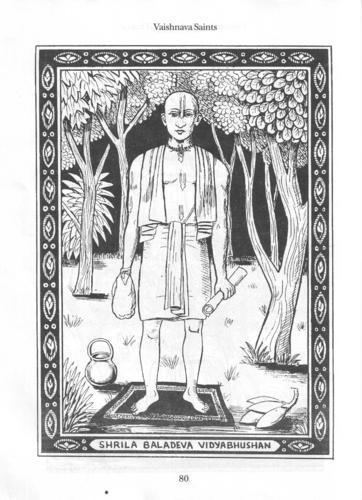
The king was initiated within the Gaudiya sampradaya and he sent word to Vrindavana, informing the devotees what had happened. At that time Srila Visvanatha Cakravarti was very aged so in his place he sent his student, Sri Baladeva. In a great assembly he posed such forceful arguments to the Ramanandi's that they could not reply to them. He further explained: "The originator of the Gaudiya Vaisnava sampradaya, Sri Caitanya Mahaprabhu, has accepted Srimad Bhagavata as the natural commentary on the Vedanta-sutra, as composed by Srila Vyasadeva Himself. This is proven in the Sat-sandarbha."
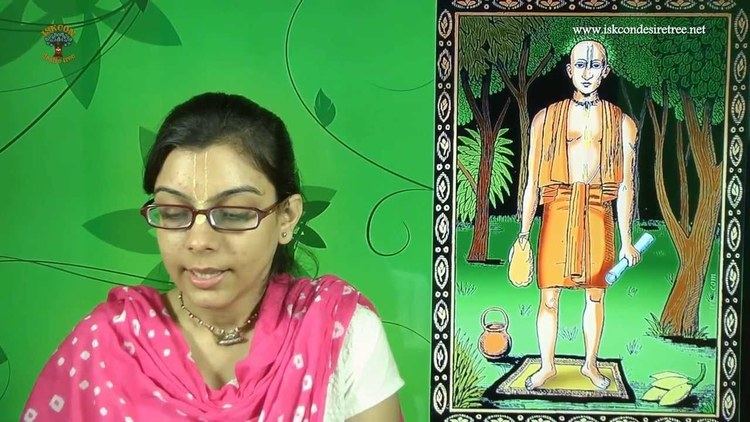
The scholars in the assembly, however, refused to accept anything other than a direct commentary on the sutra. Having no other recourse, Baladeva promised to present them with one.
Feeling very aggrieved, Sri Baladeva came to Sri Govindaji's mandira (temple) and informed Sri Govinda of everything that had happened. That night the Lord appeared to him in a dream and instructed him to write a commentary on the Vedanta-sutra: "I will dictate to you what to write and therefore no one will be able to refuse to accept it."
Thus Baladeva began to write, and very quickly completed the commentary which was titled 'Sri Govinda Bhashya'. It convinced the Ramanandi scholars and they bestowed upon Sri Baladeva the title 'Vidyabhushana' ('ornament of knowledge (vidya)').
They expressed their desire to accept initiation from Sri Baladeva Vidyabhushana. However, he declined their request by stating that amongst the four authorized sampradayas, the Sri sampradaya was highly respectable and the foremost adherent of dasya-bhakti (devotion in servitorship). If there was any cause of loss of respect to the sampradaya this might be considered an offense.
In Vrindavan
Returning from Jaipur to Vrindavana, Sri Baladeva presented the certificate of victory to Srila Visvanatha Cakravarti Thakura and narrated all of the events that had transpired. All of the devotees were in great ecstasy to receive this news and Cakravartipada bestowed his full blessings on Sri Baladeva. At this time, Sri Baladeva Vidyabhushana began to write a commentary on Srila Jiva Gosvami's Sat-sandarbha.
Sri Vijaya Govinda, residing at Gokulananda Mandira in Vrindavana, was worshiped by Baladeva Vidyabhushana personally. According to the opinion of some devotees, the large Deities Sri Sri Radha-Syamasundara, were installed by Sri Baladeva Vidyabhushana.
After departure of Sri Visvanatha Cakravarti Thakura Sri Baladeva Vidyabhushana became the next acharya of the Gaudiya Vaisnava sampradaya.
Srila Baladeva Vidyabhushana became known later as Sri Govinda dasa. He had two well-known disciples: Sri Uddhava dasa and Sri Nanda Misra.
Some of his books are: Bhasya-pithaka, Sri Govinda-bhasya, Siddhanta-ratnam, Sahitya-kaumudi, Vedanta-syamantaka, Prameya-ratnavali, Siddhanta-darpana, Kavya-kaustubha, Vyakarana-kaumudi, Pada-kaustubha, Isadi-upanisad bhasya, Gitabhusana-bhasya, Sri Visnunamasahasra-bhasya, Sanksepa-bhagavatamrta- tippani-saranga-rangada, Tattva-sandarbha-tika, Stava-mala-vibhusana-bhasya, Nataka-candrika-tika, Candraloka-tika, Sahitya-kaumudi-tika, Srimad-Bhagavata-tika, Vaisnavanandini, etc.
